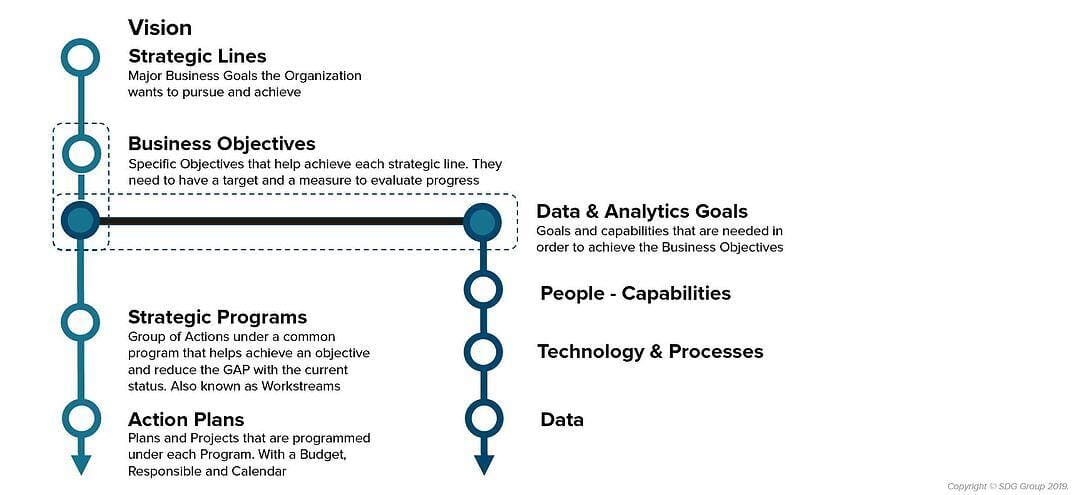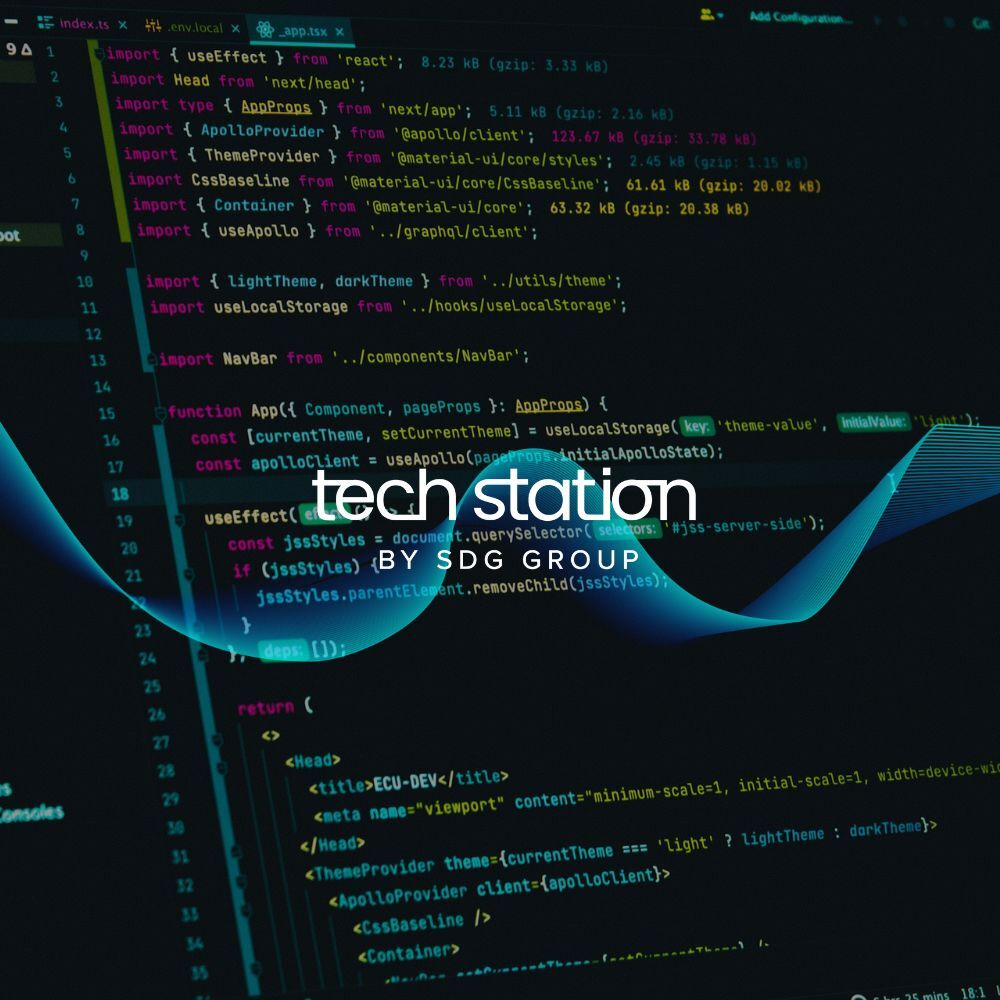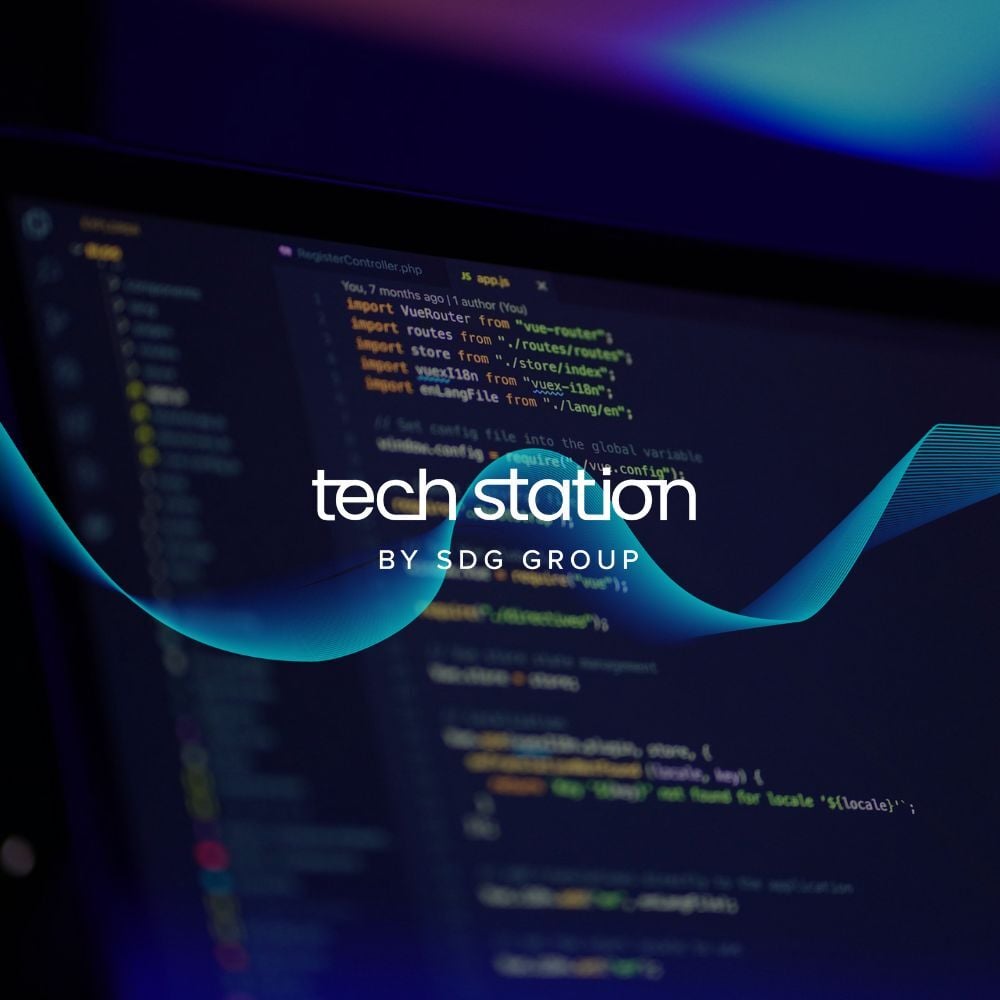Data is everywhere: It is clogging networks, ballooning storage requirements, crossing borders in multi cloud and hybrid environments, and generally placing huge demands on infrastructure, networks and applications.
Whether we call it “big” or not, data is huge and it is still growing. Legacy systems, architectures and processes will not continue to be sufficient enough for the performance and governance requirements of today’s business. A Modernization of the Data Framework is needed, and below are our recommended steps in the process and the approach that an organization needs to become data-driven.
Step 1: A Strategy
In today's data-driven ecosystem, data and analytics is an enabler of the overall business strategy. It’s an imperative that two strategies are aligned and are sponsored at the C-level. Like any other strategy implementation, actions need to be defined. This can be done by having a Data Roadmap and aligning it to the business needs that come from their objectives and current capabilities. The graphics below depicts our recommended process to follow when aligning your data and business strategy.

Step 2: Data Governance
Data Governance is the control tower of the data strategy execution. It’s the framework that facilitates the understanding of the life cycle of data and information, and it turns them into transformational assets for the organization. It’s also going to ensure that all other process like Machine Learning, AI and Augmented Analytics run on the right data. The key to success is to understand your organization’s needs and align your Data Governance model to them. You can get started by following our Data Governance Guiding Principles:
- Standardize Definitions, Use, Glossary and Data Structures
- Promote Change Management that Assures Data Ownership by the Business
- Define a Unique Data Language
- Process to ensure Quality, Accessibility and Traceability of Data
- Compliant with Laws and Ethic Codes (Security, Data Privacy,..)
- Data as a Transformational Asset Across the Organization
- Right Technologies to Manage and Improve Data Quality and Traceability
Step 3: New Data Framework
It has been reported by a few of Gartner’s analysts that the Big Data hype is over. Whether we call it “big” or not, data isn't going to stop growing and we need new means to ensure performance and governance. The new data framework that is needed should use a data lake with a modernized Hadoop and warehousing technology that coexist and complement each other. This is going to improve data access and provide a “one stop shop” for users, providing that all data is centralized and tagged. Also, this new data framework will reduce the need for your warehouse to process everything. The illustration below is our recommended Modernized Data Framework.

The key to success with disruption in the industry is to understand and experiment with trends before they mainstream, allowing you to create new business opportunities and improve competitiveness. The Modernization of the Data Framework isn't the only trend we are seeing this year.
You're one step closer to enabling a data-driven organization. Discover the 9 Data & Analytics Trends for 2019.
.png?width=2000&name=SDG%20-%20Logo%20White%20(1).png)








%20(3).png)
.jpg)
.jpg)